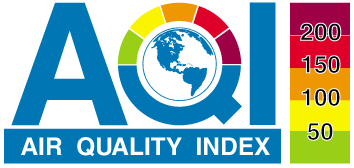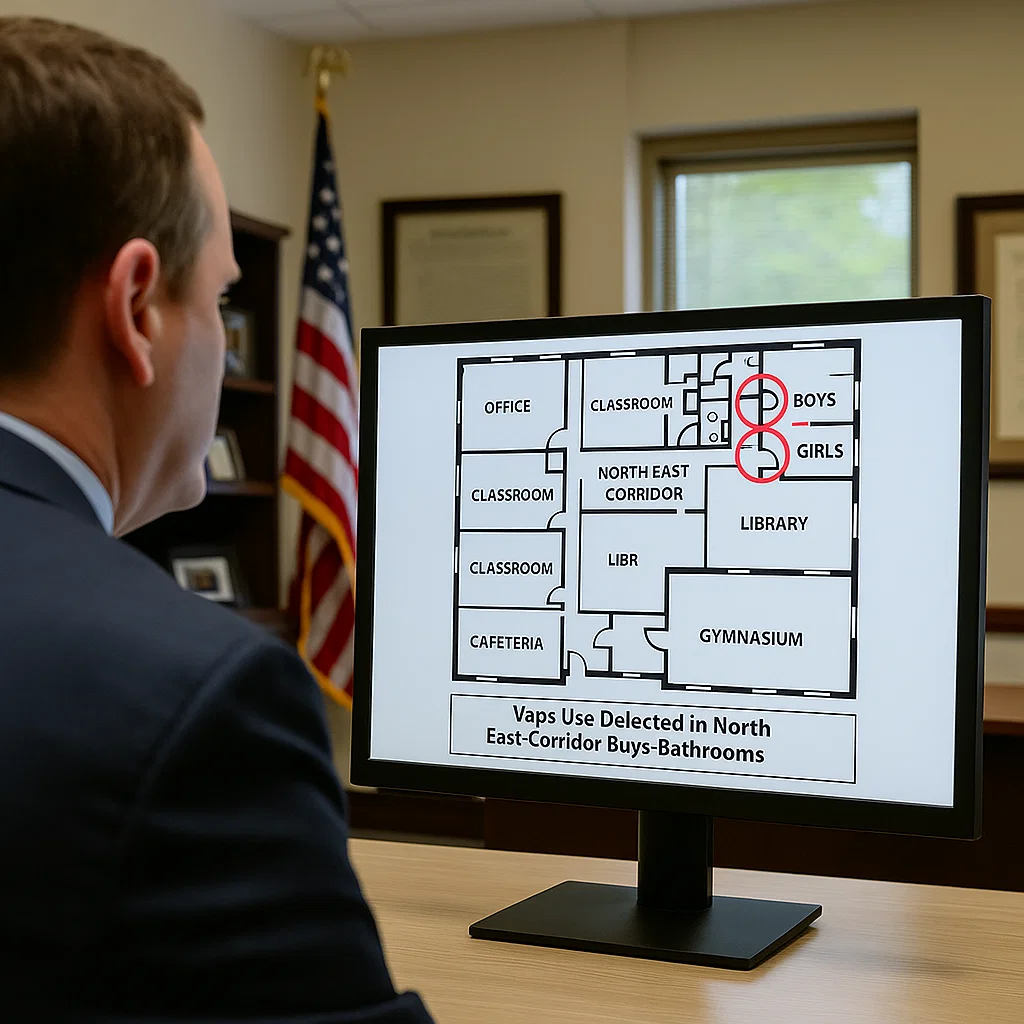Make Indoor Air Visible
VaperViper integrates particulate, gas, and environmental sensing with vape plume detection to generate live, zone-based notifications. Use it to protect classrooms, libraries, cafeterias, and bathrooms, where youth vaping often occurs, while documenting alignment to recognized clean-air targets.
Evidence and standards sources are listed below; graphic assets are credited to their sources.


Why clean classroom air matters
Poor indoor air quality in schools is linked to asthma symptoms, headaches, drowsiness, difficulty concentrating, and absences. Reviews by the U.S. EPA and public-health organizations summarize evidence that dampness/mold and inadequate ventilation increase respiratory symptoms and reduce academic performance and attendance among students. [1] [2]
Experimental and field studies show that better ventilation and lower CO2, PM2.5, and VOCs are associated with improved cognitive performance and fewer illness-related absences. In controlled exposure trials (the “COGfx” studies), decision-making scores improved when CO2 and VOCs were reduced and ventilation increased; similar school studies have tied higher ventilation to lower absence rates. [3] [4]
Children are uniquely vulnerable. Fine particles (PM2.5) penetrate deep into the lungs and bloodstream; the EPA strengthened the annual PM2.5 health standard to 9 µg/m³ in 2024. [5]
Standards & targets you can track
- Ventilation (classrooms): ASHRAE 62.1 VRP (e.g., ~10 cfm/person + 0.12 cfm/ft²). [6]
- Infectious aerosols: ASHRAE 241 (Equivalent Clean Airflow, building readiness). [7]
- Clean-air delivery: CDC/NIOSH suggests aiming for ≥5 ACH (or eACH). [8]
- Filtration: MERV-13 or highest compatible. [9]
- Particle exposure: EPA annual PM2.5=9 µg/m³; WHO guideline 5 annual & 15 24-hour. [5] [10]
Facility metrics that reveal design or operational problems
CO₂ (ppm)
PM₂.₅ (µg/m³)
tVOC (ppb)
Temp/RH
Vape detection — bathrooms highlighted on the map

E-cigarette aerosol is not just “water vapor”
CDC notes that e-cigarette aerosol can contain nicotine, metals (nickel, tin, lead), ultrafine particles, volatile organic compounds, and certain flavorings linked to lung disease; youth exposure harms attention and learning. [12] Numerous jurisdictions report vaping in school bathrooms; focusing sensors and alerts in those zones helps administrators respond quickly and document patterns. [13] [14]
VaperViper correlates aerosol signatures (PM2.5/tVOC bursts and characteristic time-profiles) with location to differentiate vape plumes and reduce nuisance alarms.
Request a pilot
Tell us about your facility and timelines. We’ll reply by email.
